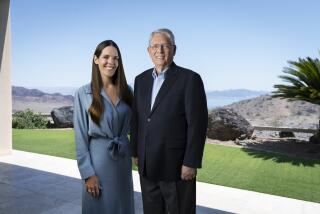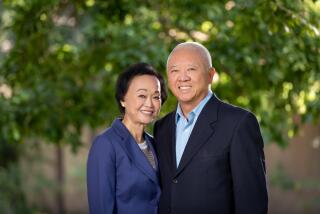City of Hope Is Among Top Research Centers
- Share via
Editor’s note: After discussions with Times editors about a May 2 article, the City of Hope was invited to write a letter to provide some important context for readers.
In the article “City of Hope Names New CEO,” the Los Angeles Times painted a narrow -- and therefore potentially misleading -- picture of City of Hope. We appreciate The Times’ invitation to respond with a more comprehensive view of our organization’s scientific programs and financial status.
For the record:
12:00 a.m. June 1, 2003 For The Record
Los Angeles Times Sunday June 01, 2003 Home Edition Main News Part A Page 2 National Desk 2 inches; 67 words Type of Material: Correction
City of Hope -- In a May 2 article in the Business section, City of Hope National Medical Center in Duarte was incorrectly referred to as the nation’s third-largest cancer center, which it is not; by various measures, many others are larger. Also, a letter by the president of City of Hope in today’s Business section provides important context about the institution’s scientific programs and financial status.
City of Hope is one of the world’s leading biomedical research and treatment centers for those with cancer, diabetes and other life-threatening diseases. Our reputation -- recognized by our patients and philanthropic donors -- has been established by national scientific and professional peers who regularly review City of Hope’s research programs and its contributions to scientific literature. This external review, the benchmark for evaluating research institutions, provides an objective view of City of Hope’s virtues.
The most prominent of peer-review groups direct the federal government’s National Institutes of Health research networks and funding. After nationwide competitions in which these peer reviewers assessed many institutions, City of Hope has been invited to join a number of important NIH-sponsored research networks and centers. For example, in 1998, City of Hope was named one of 39 Comprehensive Cancer Centers of the National Cancer Institute. This designation recognizes our excellent laboratory and clinical research in cancer, as well as our important community outreach activities directed toward cancer prevention and control. The designation [recently] was formally renewed for the next five years.
In 2001, the NIH selected us as one of the ten institutions that constitute the National Islet Cell Transplantation Network. Through the cooperative research of this group, we will make important progress in the search for a diabetes cure. Also in 2001, we became one of the five National Gene Vector Laboratories of the NIH, which provides important technical support for the national gene therapy effort. In 2002, we were one of 14 institutions asked to join the National Bone Marrow Transplantation Research Network.
In the past six years, City of Hope has more than doubled its peer-reviewed research grants. Indeed, we rank in the top 5% of the thousands of institutions nationally that receive funds from the NIH.
All these designations recognize the outstanding research conducted at City of Hope. We have published in the highest tier of international scientific journals significant discoveries in human genetics and gene therapy, bone marrow transplantation, immunology and immunotherapy, experimental therapeutics of cancer, and molecular biology and molecular medicine.
One further measure of our work’s importance has been our success in licensing City of Hope technology to the biotechnology industry for the manufacture of significant drugs that translate our science into human benefit. This began with the discovery of synthetic insulin and human growth hormone and now continues with a host of anti-cancer drugs, such as Herceptin, Rituxan and AvastinTM, that all employ a platform technology in monoclonal antibody design co-invented by City of Hope scientists. In 2000, we ranked ninth among all U.S. academic institutions for annual royalty income. This income is reinvested in our research programs.
The financial health of City of Hope has allowed us to support an extraordinary level of patient care and research initiatives in our National Medical Center subsidiary. The NMC regularly and deliberately incurs a deficit because we choose to conduct a high level of clinical research, putting more than double the number of patients on clinical trials than the average cancer center. We deliberately choose to maintain an exceptionally high level of patient care, reflected in a 2002 accreditation survey of the hospital in which we received the top score in the nation. Finally, we deliberately choose to support a significant level of care for underinsured patients. We support such mission-driven activities through the generous donations of our supporters and the growth of grants and royalties described above.
Thus, in the aggregate, City of Hope’s consolidated operating results continue to show substantial surpluses ($12 million last year), and we have increased our assets by 6% yearly for the past five years, triple the rate of growth of our liabilities.
The real story about City of Hope is that, in the face of a very difficult local managed-care economy, a troubled economy and a highly competitive research funding environment, we continue to advance our mission of providing outstanding patient care and contributing important advances to the national biomedical research effort.
Michael A. Friedman, MD
President, City of Hope
More to Read
Sign up for Essential California
The most important California stories and recommendations in your inbox every morning.
You may occasionally receive promotional content from the Los Angeles Times.










